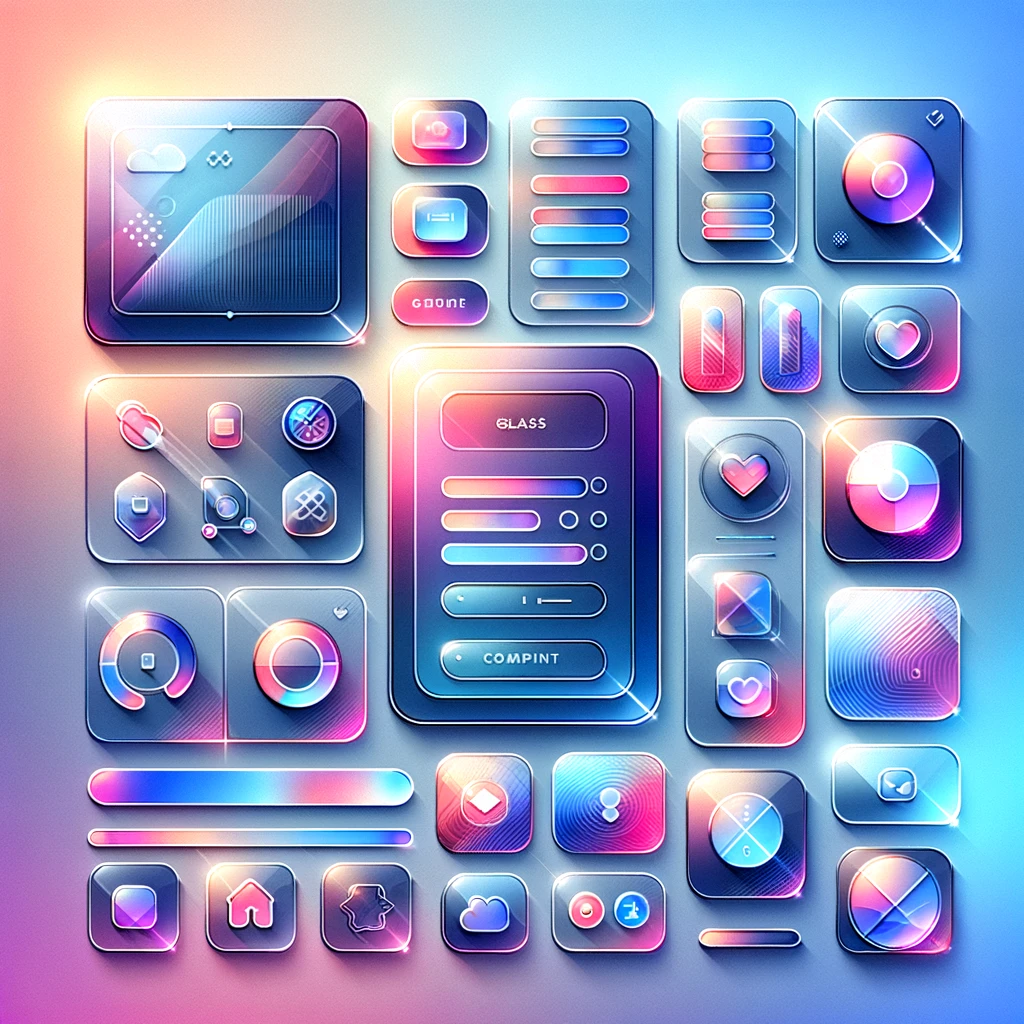UISlider in UIKit
UISlider is a versatile component in the UIKit framework, providing a user interface element that allows users to select a single value from a continuous range of values.

UISlider in UIKit
UISlider is a versatile component in the UIKit framework, providing a user interface element that allows users to select a single value from a continuous range of values. In this article, we will explore what UISliders are, the various functionalities they offer, and provide practical code examples to demonstrate how you can implement and customize them in your iOS projects.
What is a UISlider?
A UISlider is a UIControl that provides a way for users to select a single value from a continuous range of values. It consists of a thumb (or handle) that the user can drag along a track to adjust the value. UISliders are commonly used for adjusting settings such as volume, brightness, or any other value that can be represented on a linear scale.
What Can You Do with UISliders?
UISliders offer a range of functionalities and customization options. Here are some key things you can do with UISliders:
- Set Minimum and Maximum Values: Define the range of values the slider can represent.
- Current Value: Get or set the current value of the slider.
- Continuous Updates: Control whether the slider sends continuous updates while being dragged.
- Custom Appearance: Customize the appearance of the slider, including its track and thumb images.
- Handle Value Changes: Respond to value changes using target-action methods.
Implementing UISlider in Swift
Let's dive into some code examples to see how you can create, customize, and work with UISliders in Swift.
To create a simple UISlider, you need to initialize it and add it to your view. Here is an example:
import UIKit
class ViewController: UIViewController {
override func viewDidLoad() {
super.viewDidLoad()
view.backgroundColor = .white
// Create a UISlider
let mySlider = UISlider()
mySlider.minimumValue = 0
mySlider.maximumValue = 100
mySlider.value = 50
mySlider.addTarget(self, action: #selector(sliderValueChanged(_:)), for: .valueChanged)
mySlider.translatesAutoresizingMaskIntoConstraints = false
// Add the slider to the view
view.addSubview(mySlider)
// Set Auto Layout constraints
NSLayoutConstraint.activate([
mySlider.centerXAnchor.constraint(equalTo: view.centerXAnchor),
mySlider.centerYAnchor.constraint(equalTo: view.centerYAnchor),
mySlider.leadingAnchor.constraint(equalTo: view.leadingAnchor, constant: 20),
mySlider.trailingAnchor.constraint(equalTo: view.trailingAnchor, constant: -20)
])
}
@objc func sliderValueChanged(_ sender: UISlider) {
print("Slider value: \(sender.value)")
}
}
In this example, we create a UISlider and set its minimum and maximum values to 0 and 100, respectively. We set the initial value to 50 and add a target-action method to handle value changes. The slider is added to the view and centered using Auto Layout constraints.
Customizing UISlider Appearance
You can customize the appearance of UISlider to match the design of your application. Here is an example of customizing the minimum track tint color, maximum track tint color, and thumb image:
import UIKit
class ViewController: UIViewController {
override func viewDidLoad() {
super.viewDidLoad()
view.backgroundColor = .white
// Create a UISlider
let mySlider = UISlider()
mySlider.minimumValue = 0
mySlider.maximumValue = 100
mySlider.value = 50
mySlider.addTarget(self, action: #selector(sliderValueChanged(_:)), for: .valueChanged)
mySlider.translatesAutoresizingMaskIntoConstraints = false
// Customize appearance
mySlider.minimumTrackTintColor = .blue
mySlider.maximumTrackTintColor = .gray
mySlider.thumbTintColor = .green
// Add the slider to the view
view.addSubview(mySlider)
// Set Auto Layout constraints
NSLayoutConstraint.activate([
mySlider.centerXAnchor.constraint(equalTo: view.centerXAnchor),
mySlider.centerYAnchor.constraint(equalTo: view.centerYAnchor),
mySlider.leadingAnchor.constraint(equalTo: view.leadingAnchor, constant: 20),
mySlider.trailingAnchor.constraint(equalTo: view.trailingAnchor, constant: -20)
])
}
@objc func sliderValueChanged(_ sender: UISlider) {
print("Slider value: \(sender.value)")
}
}
In this example, we customize the UISlider by setting its minimum track tint color to blue, maximum track tint color to gray, and thumb tint color to green. These properties change the colors of the slider's track and thumb.
Handling Continuous Updates
By default, UISlider sends continuous updates as the user drags the thumb. You can control this behavior by setting the isContinuous property. Here is an example:
import UIKit
class ViewController: UIViewController {
override func viewDidLoad() {
super.viewDidLoad()
view.backgroundColor = .white
// Create a UISlider
let mySlider = UISlider()
mySlider.minimumValue = 0
mySlider.maximumValue = 100
mySlider.value = 50
mySlider.addTarget(self, action: #selector(sliderValueChanged(_:)), for: .valueChanged)
mySlider.isContinuous = false
mySlider.translatesAutoresizingMaskIntoConstraints = false
// Add the slider to the view
view.addSubview(mySlider)
// Set Auto Layout constraints
NSLayoutConstraint.activate([
mySlider.centerXAnchor.constraint(equalTo: view.centerXAnchor),
mySlider.centerYAnchor.constraint(equalTo: view.centerYAnchor),
mySlider.leadingAnchor.constraint(equalTo: view.leadingAnchor, constant: 20),
mySlider.trailingAnchor.constraint(equalTo: view.trailingAnchor, constant: -20)
])
}
@objc func sliderValueChanged(_ sender: UISlider) {
print("Slider value: \(sender.value)")
}
}
In this example, we set the isContinuous property to false, so the slider only sends an update when the user releases the thumb, rather than continuously while dragging.
Customizing UISlider Track and Thumb Images
You can further customize the appearance of UISlider by setting custom images for the track and thumb. Here is an example:
import UIKit
class ViewController: UIViewController {
override func viewDidLoad() {
super.viewDidLoad()
view.backgroundColor = .white
// Create a UISlider
let mySlider = UISlider()
mySlider.minimumValue = 0
mySlider.maximumValue = 100
mySlider.value = 50
mySlider.addTarget(self, action: #selector(sliderValueChanged(_:)), for: .valueChanged)
mySlider.translatesAutoresizingMaskIntoConstraints = false
// Customize track and thumb images
mySlider.setMinimumTrackImage(UIImage(named: "minTrackImage"), for: .normal)
mySlider.setMaximumTrackImage(UIImage(named: "maxTrackImage"), for: .normal)
mySlider.setThumbImage(UIImage(named: "thumbImage"), for: .normal)
// Add the slider to the view
view.addSubview(mySlider)
// Set Auto Layout constraints
NSLayoutConstraint.activate([
mySlider.centerXAnchor.constraint(equalTo: view.centerXAnchor),
mySlider.centerYAnchor.constraint(equalTo: view.centerYAnchor),
mySlider.leadingAnchor.constraint(equalTo: view.leadingAnchor, constant: 20),
mySlider.trailingAnchor.constraint(equalTo: view.trailingAnchor, constant: -20)
])
}
@objc func sliderValueChanged(_ sender: UISlider) {
print("Slider value: \(sender.value)")
}
}
In this example, we set custom images for the minimum track, maximum track, and thumb of the UISlider. This allows for a highly customized appearance that matches the design of your application.
Conclusion
UISliders are versatile components for allowing users to select a value from a continuous range. In this article, we've covered the basics of what UISliders are, their various functionalities, and provided practical code examples to help you implement and customize them in your own projects. From creating simple sliders to customizing their appearance and handling continuous updates, mastering UISliders is essential for building intuitive and user-friendly interfaces.
Understanding and effectively utilizing UISliders can significantly enhance your app's usability and user experience. Experiment with different UISlider properties and techniques to create dynamic and engaging value selectors in your iOS applications.





